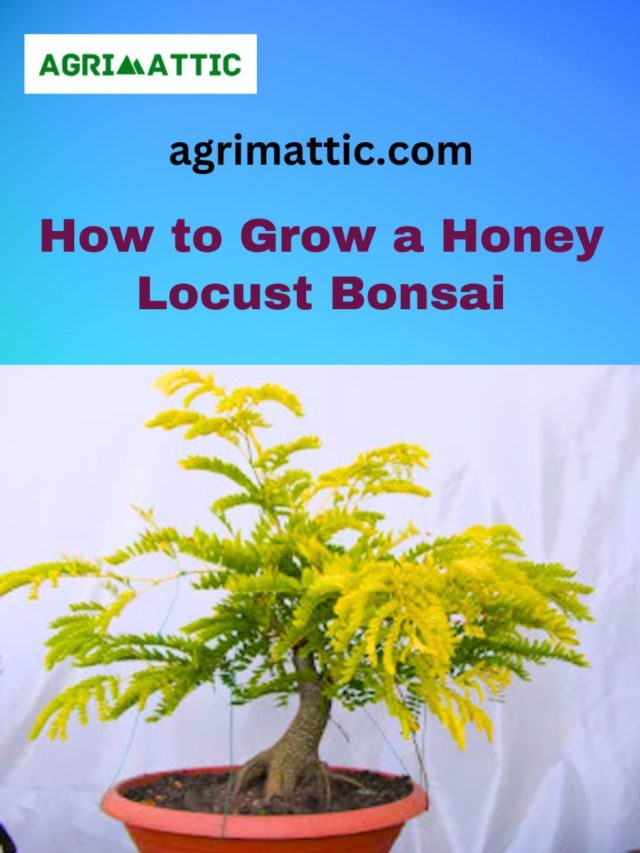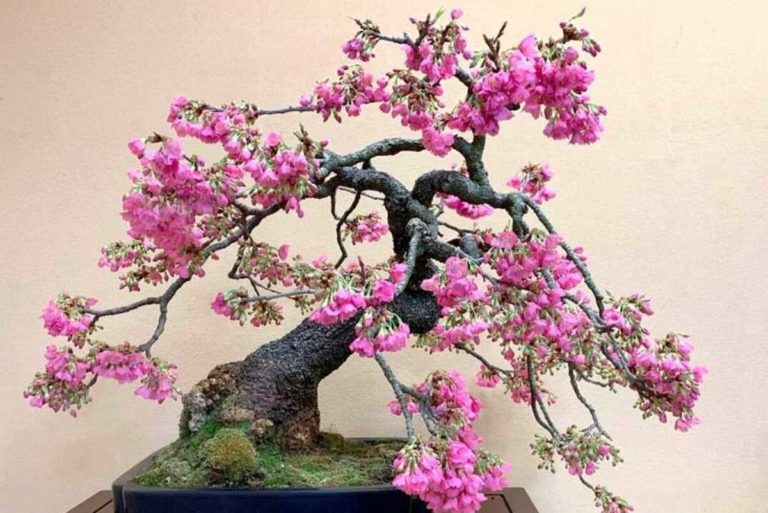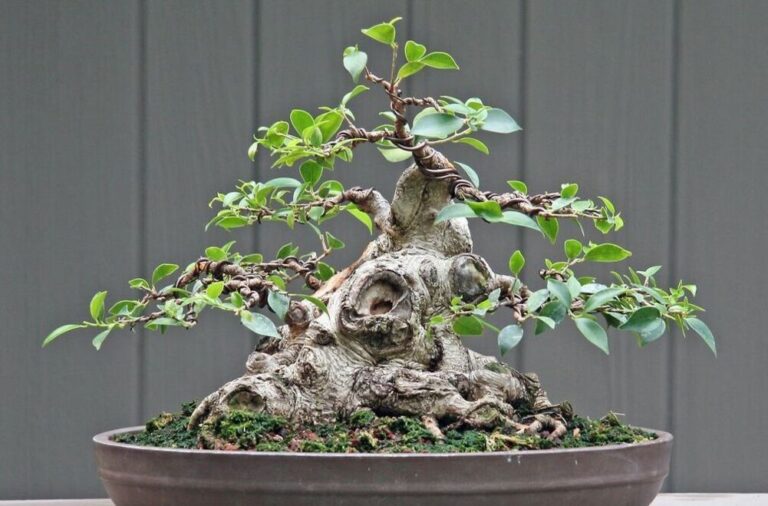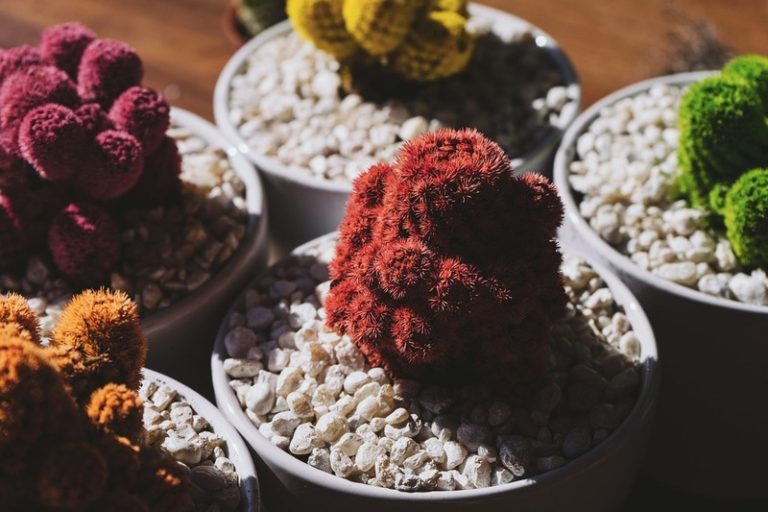Honey Locust Bonsai: A Miniature Tree of Beauty
Do you like the idea of having a small tree that looks like it has been there for a long time? This is the magic of bonsai, which is an old way to grow small trees in pots. The Honey Locust is a great tree to use as a bonsai. Let’s look more closely at this amazing tree and talk about how you can make your own Honey Locust bonsai.
What is a Honey Locust Bonsai?
A Honey Locust Bonsai is a stunning living artwork that encapsulates nature’s beauty in a tiny, potted form. It’s a small tree that has been precisely constructed using specific pruning and shaping processes. This bonsai version of the Honey Locust tree highlights the tree’s inherent appeal and grace on a much smaller scale, allowing fans to appreciate nature’s splendor in their own homes or gardens.
History and Origins of the Honey Locust Bonsai
The Honey Locust Bonsai’s history and origins are intertwined with both cultural and horticultural traditions. Bonsai is an old method of raising small trees in pots that originated in China and was developed in Japan. The Honey Locust Bonsai arose as enthusiasts wanted to capture the unique traits of the Honey Locust tree inside this art form, demonstrating the versatility of the art form.
Early Bonsai Traditions: Bonsai has been practiced for nearly a thousand years, with origins in ancient China. Trees were grown in pots to replicate nature’s magnificence in small. Bonsai methods made their way to Japan as commerce and cultural contacts grew, where the artform flourished and developed its own traits.
Influence of Japanese Bonsai: Bonsai has grown into a sophisticated and complicated art form in Japan, expressing ideas of balance, harmony, and reverence for nature. Bonsai artists in Japan, known as “bonsaika,” began experimenting with a range of tree species, including the Honey Locust, to explore diverse forms, shapes, and styles.
Honey Locust’s Appeal: The magnificence of the Honey Locust tree, with its delicate compound leaves and unusual thorny branches, drew the attention of bonsai lovers. Because of its responsiveness to bonsai techniques, it has become a popular choice for shaping and training.
Spread and Development: The art of bonsai has expanded around the world throughout the years, and admirers from all cultures have embraced its beauty and challenges. The Honey Locust Bonsai became famous not just because of its aesthetic attractiveness, but also because of the difficulty it presented owing to its thorns and peculiar growth patterns.
Modern Honey Locust Bonsai: Today, the Honey Locust Bonsai continues to enchant bonsai enthusiasts all over the world. Its cultivation is aided by nurseries, workshops, and internet resources. Artists combine old techniques with creative ideas to create magnificent tiny renditions of the Honey Locust’s innate elegance.
Cultural Exchange and Innovation: The Honey Locust Bonsai’s journey reflects the interconnectedness of cultures and the continuous evolution of horticultural practices. The practice of shaping and nurturing these trees honors tradition while allowing for personal creativity and artistic expression.
The Honey Locust Bonsai’s history and beginnings are a monument to the synthesis of cultural heritage, creative innovation, and a profound respect for nature’s beauty. This living art form bridges the gap between historic traditions and current inventiveness, honoring the miraculous transformation of a tree species into a stunning piece of art.

Honey Locust Bonsai and Their Symbolism
Within the domain of bonsai culture, Honey Locust Bonsai have both aesthetic and symbolic importance. These small trees not only catch the sight with their delicate foliage and elegant branches, but they also offer deep symbolism that appeals to both aficionados and onlookers.
- Resilience and Endurance: The Honey Locust tree is noted for its capacity to survive in a variety of situations, even difficult ones. In bonsai form, its meaning extends to perseverance and endurance, teaching us that beauty and strength may blossom even in the face of hardship.
- Balance and Harmony: As an art form, bonsai is all about balance and unity between nature and what people do. With its careful shaping and trimming, the Honey Locust Bonsai shows how working together with nature can lead to a peaceful creation.
- Reflection of Time: Even though it is small, a well-made Honey Locust Bonsai gives the impression that it is old and mature. This image shows how time gives us knowledge and depth, and it reminds us of the beauty that comes with age.
- Connection to Nature: People who grow bonsai often feel like they have a strong link to nature through their work. The complex branches and leaves of the Honey Locust Bonsai represent this link and the unity that can be reached when people work together with nature.
- Beauty in Simplicity: The Honey Locust is beautiful because of how simple it is. This simplicity is a lesson that beauty doesn’t always have to be extravagant. Sometimes, the most beautiful things are the ones that are simple and elegant.
- Transience and Impermanence: Bonsai is an art form that changes over time, just like life. The Honey Locust Bonsai’s change from a young tree to a miniature work of art shows how life is always changing and how important it is to enjoy each moment.
- Personal Growth and Patience: The care and attention needed to grow a Honey Locust Bonsai are similar to the patience and hard work needed to grow as a person. Just like a tree changes over time, so do we. This teaches us the worth of being patient and the benefits of making steady progress.
The Honey Locust Bonsai is not only an aesthetically pleasing small-scale tree, but rather embodies a complex symbolism including tenacity, harmony, personal development, and the enduring relationship between humans and the natural world. The Honey Locust Bonsai is regarded as a valued and thought-provoking art form, since enthusiasts not only enjoy these little marvels but also engage in contemplation of their underlying significance.
Characteristics of the Honey Locust Bonsai
The Honey Locust Bonsai is a beautiful tiny tree with a lot of unique features that make it a favorite among bonsai fans. These things add to its visual appeal and its ability to show the beauty of nature in a small space. Here are some things that make the Honey Locust Bonsai what it is:
Delicate Compound Leaves: The Honey Locust Bonsai stands out because of its beautiful complex leaves. These leaves are made up of smaller leaflets that are grouped in a feather-like pattern. This makes for fine and delicate greenery that gives the bonsai a graceful look.
Thorny Branches: The Honey Locust tree is known for its thorny branches, and the bonsai form of this tree often keeps this trait. Even though they are small, these thorns add a bit of complexity and aesthetic interest to the tree’s structure.
Intriguing Bark Texture: The Honey Locust Bonsai may have rough bark with interesting colors and designs that add to its overall beauty. The bark and the tiny leaves look good together because they are so different.
Distinctive Growth Patterns: Honey Locust Bonsai can be made to grow in different ways, such as with a formal upright style, an informal upright style, a waterfall style, or a slanting style. With these designs, bonsai fans can show off their creativity and give each tree its own style.
Seasonal Transformation: The Honey Locust Bonsai goes through interesting yearly changes, just like its full-sized cousin. When spring comes, new leaves come out, giving the world a fresh burst of green. In the summer, the tree has a full shade. In the fall, when the leaves change color to yellow and red, the tree looks beautiful.
Miniature Proportions: The art of bonsai is all about making a tiny tree look like a full-grown tree. The Honey Locust Bonsai does this by carefully controlling its growth. This makes it look like time and weather have formed the tree, even though it is small.
Visual Balance: The Honey Locust Bonsai, when correctly designed, has a beautiful balance between its trunk, branches, and foliage. The technique of striking this equilibrium entails meticulous pruning and shaping in order to create a satisfying and visually appealing arrangement.
Connection to Nature: The Honey Locust Bonsai represents a connection to nature. Its depiction of a tree in small form serves as a reminder of the beauty and wonder found in nature, allowing lovers to bring a bit of nature’s tranquility into their living spaces.
Artistic Expression: The skill of making a Honey Locust Bonsai allows enthusiasts to show their creativity and vision. Artists can add their unique touch to the bonsai, resulting in a variety of interpretations of the Honey Locust’s innate beauty.
The Honey Locust Bonsai is distinguished by its delicate foliage, thorny branches, distinctive bark texture, and ability to convey nature’s shifting seasons and everlasting beauty. Its visual appeal and creative potential make it a prized contribution to the world of bonsai horticulture.
How to Grow a Honey Locust Bonsai
Growing a Honey Locust Bonsai is a rewarding journey that combines horticultural knowledge, artistic expression, and patience. Here’s a step-by-step guide to help you get started on cultivating your own captivating miniature tree:
- Select a Healthy Specimen: Select a young Honey Locust tree with a robust trunk and well spaced branches. Look for a strong root system and colorful foliage. The size of the tree should be appropriate to the bonsai style you want to develop.
- Choose the Right Container: Opt for a bonsai pot that provides proper drainage and is appropriate for the size of your chosen Honey Locust tree. A slightly shallow pot is usually ideal for bonsai cultivation.
- Potting and Soil: Use a well-draining bonsai soil mix, as good drainage is crucial for the health of your bonsai. Repot your Honey Locust every couple of years to refresh the soil and encourage root growth.
- Pruning and Shaping: Pruning the branches and leaves on a regular basis will keep your bonsai in the appropriate form and size. To make clean cuts, use sharp bonsai shears. You may also use wire to gently guide branches into desired places while avoiding harm to the bark.
- Watering: Feel the top layer of the soil with your finger to check the moisture level. When the top inch of soil seems dry, water liberally, but prevent waterlogging. Watering frequency should be adjusted according to the season and environment.
- Fertilization: During the growing season (spring through summer), feed your Honey Locust Bonsai using a balanced bonsai fertilizer. To give the nutrients required for optimal development, use the suggested application rates.
- Sunlight: Place your bonsai in a location that receives adequate sunlight. Honey Locust trees generally prefer full sun, but in very hot climates, some afternoon shade might be beneficial to prevent leaf scorch.
- Pest and Disease Management: Common bonsai pests such as aphids and mites, as well as fungal diseases, should be avoided. Inspect your bonsai on a regular basis and address any problems as soon as possible with proper remedies.
- Seasonal Care: Pay attention to the tree’s development during the growing season (spring through summer) and adjust trimming, shape, and watering as needed. As autumn approaches, you may need to cut back on watering to prepare for winter dormancy.
- Winter Care: In winter, protect your Honey Locust Bonsai from freezing temperatures if you’re in a cold climate. Place it in a sheltered location, like an unheated garage, or use protective coverings.
- Continual Learning: Bonsai cultivation is a never-ending learning experience. Attend classes, study books, and participate in bonsai groups to broaden your knowledge and sharpen your talents.
Remember that planting a Honey Locust Bonsai is a labor of love that demands time and commitment. Accept the trip and watch as your little tree develops into a beautiful work of living art, expressing nature’s beauty and wisdom in a small package.
Displaying and Showcasing the Honey Locust Bonsai
Displaying and presenting a Honey Locust Bonsai is an art form in and of itself, allowing you to present your little masterpiece in a way that emphasizes its beauty and captures the essence of nature. Here are some pointers to help you display and promote your Honey Locust Bonsai effectively:
1. Selecting the Right Location:
Choose a location that provides appropriate lighting conditions for your Honey Locust Bonsai. It should receive enough sunlight to thrive, but avoid extreme heat or direct, scorching sunlight.
2. Indoor vs. Outdoor Display:
You can exhibit your bonsai indoors or outdoors, depending on your environment and the special demands of your bonsai. Simply make sure your bonsai’s light and temperature requirements are satisfied.
3. Positioning the Bonsai:
Place your Honey Locust Bonsai on a stand or surface that elevates it slightly above eye level. This helps viewers appreciate its details without straining their necks.
4. Rotation:
Rotate your bonsai on a regular basis to maintain uniform development. This keeps one side from getting overly shaded or congested, resulting in a balanced and proportionate look.
5. Complementary Elements:
Consider adding complementary elements to enhance the display. A simple accent plant, decorative stones, or a small figurine can add depth and interest to the overall presentation.
6. Display Stands:
“jita,” or bonsai display stands, may elevate your bonsai and add a touch of elegance. Select a stand that compliments the style of your bonsai and the overall look you want to achieve.
7. Seasonal Variations:
Change the background or the things on show as the seasons change. For example, you can use fall leaves or winter-themed accents to make a lively and interesting show.
8. Group Displays:
Consider creating a miniature landscape by grouping your Honey Locust Bonsai with other bonsai trees, rocks, and elements. This can tell a story and evoke a sense of harmony in nature.
9. Bonsai Tables and Benches:
Placing your bonsai on a specially designed bonsai table or bench can provide a dedicated space that enhances its visual impact.
10. Showcasing at Bonsai Exhibitions:
If you want to take your Honey Locust Bonsai to shows, make sure it’s in great shape. Extra care should be given to cleaning, pruning, and the general look of the plant.
11. Regular Maintenance:
Maintain and care for your bonsai to ensure it looks its best when on display. Grooming, trimming, and watering must be done on a regular basis.
Ultimately, presenting and showcasing your Honey Locust Bonsai allows you to share your love of this ancient art form with those who enjoy its beauty. You may demonstrate your passion to producing a living piece of art that captures the beauty of nature by meticulously arranging your bonsai and creating a welcoming ambiance.
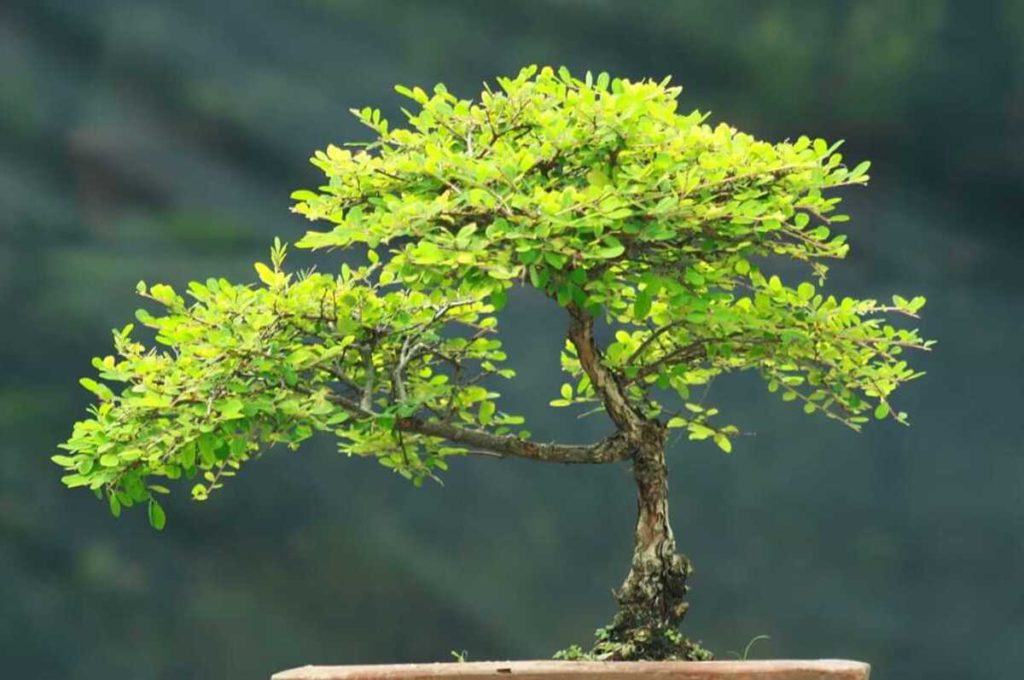
How to Care for and Maintain a Honey Locust Bonsai
Caring for and maintaining a Honey Locust Bonsai is a rewarding hobby that demands focus, patience, and a touch of horticultural talent. Proper maintenance will keep your little tree healthy and lively, and it will continue to evolve in its artistic shape. Here’s a detailed guide on providing the optimum care for your Honey Locust Bonsai:
1. Watering:
- Every day, insert your finger approximately an inch down into the soil to check the moisture level. When the top layer feels somewhat dry but before the soil becomes entirely dry, water liberally.
- Watering frequency should be adjusted based on environmental factors such as temperature and humidity. Overwatering can cause root rot, so avoid it.
2. Fertilization:
- During the growing season (spring through summer), apply a balanced liquid bonsai fertilizer to give critical nutrients.
- Follow the manufacturer’s directions for dilution and application frequency. Fertilizing should be avoided throughout the dormant winter months.
3. Pruning and Shaping:
- Pruning and trimming your Honey Locust Bonsai on a regular basis will keep it in form and avoid excessive development. To make clean cuts, use sharp bonsai shears.
- Remove any dead or diseased branches as soon as possible to promote new growth and avoid illness.
4. Wiring:
- If necessary, use bonsai training wires to gently shape and position branches. Be cautious not to wrap the wire too tightly, as it can damage the bark.
5. Repotting:
- Repot your Honey Locust Bonsai every 2-3 years to refresh the soil, encourage root growth, and prevent the tree from becoming root-bound.
- Spring is generally the best time for repotting, just before new growth begins.
6. Sunlight:
- Place your Honey Locust Bonsai in a spot that gets plenty of sunshine. If you’re growing it inside, make sure it has enough of indirect light.
- Monitor the foliage for signs of too much or too little light. Adjust its position accordingly.
7. Pest and Disease Management:
- Inspect your bonsai on a regular basis for pests such as aphids, mites, and scale insects. If you find any infestations, treat them as soon as possible using the necessary medicines.
- Look for indicators of fungal infections like powdery mildew or leaf spot. These problems may be avoided by improving air circulation and avoiding moist foliage.
8. Seasonal Adjustments:
- Change your care plan as the seasons do. Pay attention to growth and upkeep in the spring and summer. In the fall, water less and get your plants ready to sleep for the winter.
9. Winter Care:
- If you live somewhere cold, make sure your Honey Locust Bonsai doesn’t get too cold. Put it somewhere safe, or use frost cloth to protect it.
10. Continuous Learning:
- Bonsai maintenance is an ongoing learning experience. To improve your abilities and knowledge, stay interested, study books, take courses, and interact with other aficionados.
Taking Care of a Honey Locust Bonsai is a rewarding experience that allows you to interact with nature while also nurturing a living piece of art. You’ll see your bonsai grow and continue to express the beauty and wisdom of nature in small form if you provide the appropriate combination of water, nutrients, and attention.
Honey Locust Bonsai Care Sheet
| Aspect | Care Tips |
| Watering | Check soil moisture regularly. Water when top inch is dry. Avoid waterlogging. Adjust frequency based on season and climate. |
| Sunlight | Place in bright, indirect sunlight. Avoid scorching heat. Outdoors: Full to partial sun. Indoors: Bright, filtered light. |
| Temperature | Thrives in moderate temperatures. Protect from extreme cold. |
| Humidity | Humidity is not a major concern, but avoid excessively dry conditions. |
| Fertilization | Apply balanced liquid bonsai fertilizer in growing season. Follow manufacturer’s recommendations. |
| Pruning & Trimming | Regularly prune for shape and size control. Remove dead/weak growth. |
| Wiring & Styling | Wire branches for shaping, but avoid excessive pressure to prevent bark damage. |
| Repotting | Repot every 2-3 years in spring. Refresh soil, trim roots, and use slightly larger pot. |
| Pest & Disease Control | Regularly inspect for pests like aphids, mites, and diseases like powdery mildew. Take action promptly. |
| Winter Care | Protect from freezing temperatures, especially in cold climates. |
| Regular Maintenance | Rotate the bonsai for even growth. Continue shaping, pruning, and feeding as needed. |
Remember, while this care sheet provides a solid foundation, observing your specific bonsai’s response and needs is crucial. Bonsai care is a dynamic process that involves both art and science, so be prepared to adjust your approach based on your tree’s unique characteristics and the conditions it’s grown in.
Conclusion:
Creating and caring for a Honey Locust bonsai is a remarkable journey that connects you with nature in a unique and intimate way. With patience, love, and a little bit of knowledge, you can transform a young tree into a living work of art that brings joy to your life. Whether you’re a seasoned bonsai enthusiast or just starting out, the Honey Locust bonsai is a wonderful choice that offers endless beauty and a sense of accomplishment. So go ahead, embark on this bonsai adventure, and watch your tiny tree thrive and flourish!
FAQ
Q: What is a Honey Locust Bonsai?
A: A Honey Locust Bonsai is a miniature tree cultivated and shaped to resemble a full-sized Honey Locust tree within a small pot. It’s a form of bonsai art that captures the beauty and essence of nature in a compact form.
Q: How do I create a Honey Locust Bonsai?
A: To make a Honey Locust Bonsai, begin by choosing a young Honey Locust tree with ideal characteristics. Pruning and wiring are used to shape and trim the tree. It should be repotted in a bonsai container with well-draining soil. Water, fertilize, and shape it on a regular basis to grow a lovely little tree.
Q: What are the unique characteristics of the Honey Locust Bonsai?
A: Honey Locust Bonsai are well-known for its beautiful complex leaves, thorny branches, unique bark texture, and ability to reflect the changing seasons. They exemplify persistence, balance, and a connection to nature, making them compelling works of art.
Q: How often should I water my Honey Locust Bonsai?
A: Check the top inch of soil on a frequent basis. When it seems little dry, add water. Watering frequency should be adjusted based on parameters such as temperature and humidity to avoid waterlogging.
Q: Where should I place my Honey Locust Bonsai for sunlight?
A: Place it in bright, indirect sunlight. Outdoors, choose a spot with full to partial sun. Indoors, ensure it receives bright, filtered light.
Q: How do I prune and shape my Honey Locust Bonsai?
A: Pruning should be done on a regular basis to keep the ideal form and size. Cut away any dead or undesirable growth. Carefully guide branches into suitable locations using wire, taking care not to harm the bark.
Q: When and how should I fertilize my Honey Locust Bonsai?
A: During the growth season (spring to summer), use a balanced liquid bonsai fertilizer. Follow the manufacturer’s dilution and frequency instructions.
Q: Is repotting necessary for my Honey Locust Bonsai?
A: Yes, repotting is important every 2-3 years in the spring. Refresh the soil, trim the roots, and choose a slightly larger pot to encourage healthy growth.
Q: How do I protect my Honey Locust Bonsai from pests and diseases?
A: Regularly inspect for pests like aphids and mites and signs of diseases like powdery mildew. Take action promptly, using appropriate treatments to prevent infestations.
Q: What winter care does my Honey Locust Bonsai need?
A: If you’re in a cold climate, protect it from freezing temperatures. Place it in a sheltered location or use frost cloth to shield it.
Q: Can I display my Honey Locust Bonsai indoors?
A: Yes, you can display it indoors. Just ensure it receives bright, indirect light and adjust care accordingly.
Q: How do I ensure my Honey Locust Bonsai’s long-term health?
A: Continuously learn and adapt your care techniques. Regular maintenance, attentive observation, and a balance of artistry and horticultural knowledge will contribute to your bonsai’s health and beauty over time.
Also Read:


